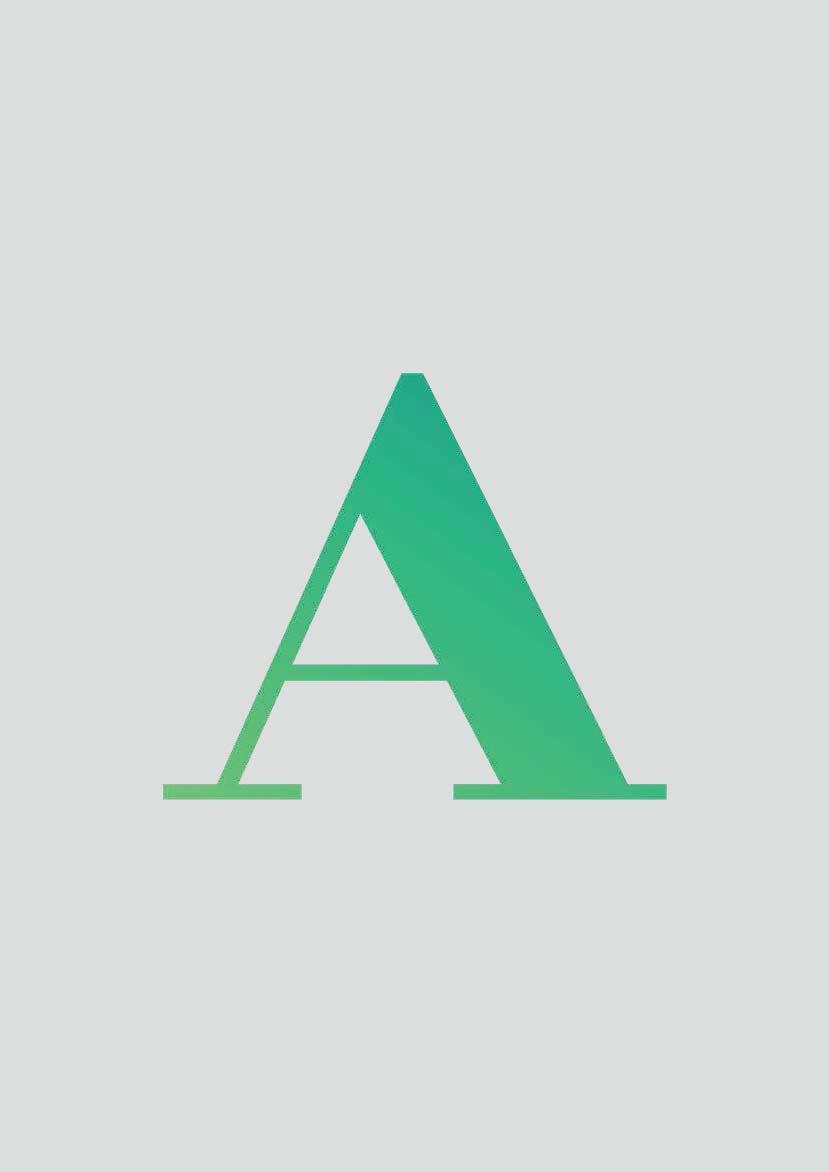
| Graduation Project | IICD 2021
_ntithesis Shikhar Bhardwaj

Copyright © 2021
Student Document Publication meant for private circulation only.
All rights reserved.
No part of this document will be reproduced or transmitted in any form or by any means, electronically or mechanically, including photocopying. xerography and videography recording without written permission from the publisher.
Shikhar Bhardwaj and IICD, Jaipur © 2021
B.Des, Product Design, 2017 - 2021, Indian Institute of Crafts and Design, Jaipur. Few photographs used in this document are sourced from the web and are used for representational purposes only. All illustrations and images used in this document are Copyright by their respective people/organisations.
Edited and Designed by -
IICD, Jaipur
Shikhar Bhardwaj
Graduation Project Mentor - Prof. Rajesh Kumar
+33 755887536
sgraphs@hotmail.com
www.sgraphs.com
Graduation project 2021 2021
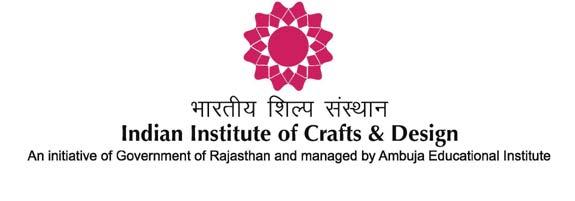
_____________$____$$$$$$$$$$$$$$
_____________$___$__$__$__$__$
_____________$__$$$$$$$$$$$$$$
_____________$__$___$__$__$__$
_____________$___$$$$$$$$$$$$$$$
____________$$$_________________$$$
__________$$___$$$_________$$$$$___$$
________$$________$$$$$$$$$__________$$$
_______$__$$_____________________$$$$___$$
____$$$$$___$$$$$$$$______$$$$$$$_______$_$
__$______$$_________$$$$$$______________$_$$
_$____$____$____________________________$_$_$
_$_____$___$______________$$$$$$$$$$$___$_$_$$
_$$$____$___$__$$$$$$$$$$$$__________$___$_$_$$
$___$$$$____$__$_____________________$___$_$$_$
$$$____$___$$__$_____________________$$__$_$__$ $___$__$__$$___$______________________$__$$$__$
$_____$$_$$____$_______________$$$____$__$_$__$
_____________________$$$ ____________________$___$ _____________________$$$ _____________________$_$ _____________________$_$
_________________$$__$$$__$$$ _______________$$__$$$$$$$___$ ______________$_______________$ _____________$_________________$ _____________$_________________$ _____________$_____$$$$$$$$$$$$$$$ _____________$____$_______________$
_____________$___$___$___________$$$
___________________$$$_$$$
_____________$____$___$$$$$$$$$$$$$
_____________$___$___$_$$$___$$$__$$ _____________$___$___$_$$$___$$$__$$ _____________$___$___$___________$$$ _____________$____$___$$$$$$$$$$$$$ _____________$_____$$$$$$$$$$$$$$ _____________$_________________$
_ntithesis
Sponsor - Self-Initiated
Student - Shikhar Bhardwaj
Mentor - Prof. Rajesh Kumar
Candidate’s Declaration
I hereby declare that the work, which is being presented in the Project Document, titled ”_ntithesis” is my own work and that, to the best of my knowledge and belief, it contains no material previously published or written by another person except where due acknowledgment has been made in the text. I further declare that the project has not been accepted for the award of any other degree or diploma of the university or other institute of higher learning,
Shikhar Bhardwaj
17/08/2021
Bath, Somerset
Certificate
This is to certify that the Diploma Project entitled “_ntithesis” Submitted by Mr. Shikhar Bhardwaj to the Indian Institute of Craft & Design towards partial fulfillment of the requirements for the award of the Under Graduate Professional Diploma Programme (Hard Material Application) (2017 - 2021) is the original work carried out by him, under my guidance.
Prof. Rajesh Kumar
Dr. Tookila Gupta
Diploma Project Jury Report
The jury on this tuesday 17 August, 2021 has evaluated the diploma project of Shikhar Bhardwaj for Under Graduate Professional Diploma Programme (Hard Material Application) (2017-2021)
Name of Jury Members
Designation Signature
Acknowledgement
I would like to give my sincere thanks to IICD for giving me this opportunity to carry my Graduation Project in first-world country where the existence of crafts are rare and can only be found in luxury market. I would like to thank our director, Dr. Toolika Gupta. I would also sincerely thank my mentor Prof. Rajesh Kumar for guiding and educating me through the course.
I would like to thank Miss Nina CHALOT for giving me this opportunity to work in her studio and for letting me have such rich learning 10 to 18 experience. I thank my batch mates and friends for the appreciable amount of help and cooperation whenever required. And my family for their support on every step of the way.
“All language is but a poor translation.”
~ Frank Kafka

Content 01 Introduction 02 Jaipur - Pink City 02.1 IICD 02.2 HMA 03 Paris 04.1 Scène design 04.2 Bricolage 04 Droog 05 Bauhaus vs Kerbs 06 What Craft ?! 07 Climate cHnaGe 07.1 Eco-anxiety 07.2 Circular Economy 07.3 Low-Tech 07.4 Wasted away 08 Design Brief 09 Understanding Craft 09.1 Objects 09.2 Breaking the bubble 09.3 Homo Faber 10 Intervention Areas 11 Re-Brief 12 Antithesis Synopsis Genesis Crisis
14 Methods & Tools 14.1 Principles 14.2 Gestalt 15 Speculation 15.1 Worldview 16 Brainstroming 16.1 Miro 16.2 Visualstroming 16.3 Themes 17 Design Principles 17.1 Maximalism 17.3 Form identity 18 Exploratory concepts 18.1 Form and Dance Setbacks Inference Iterations Strategies Detailing 19 imagine 20 Relfections 21 Feedbacks Analysis Thesis Conclusis

_ynopsis S S
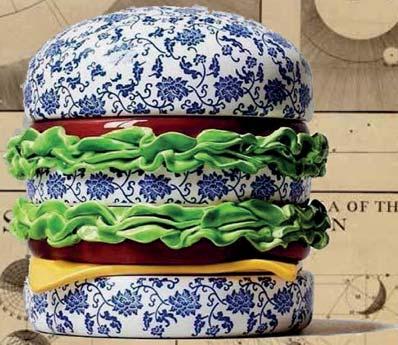
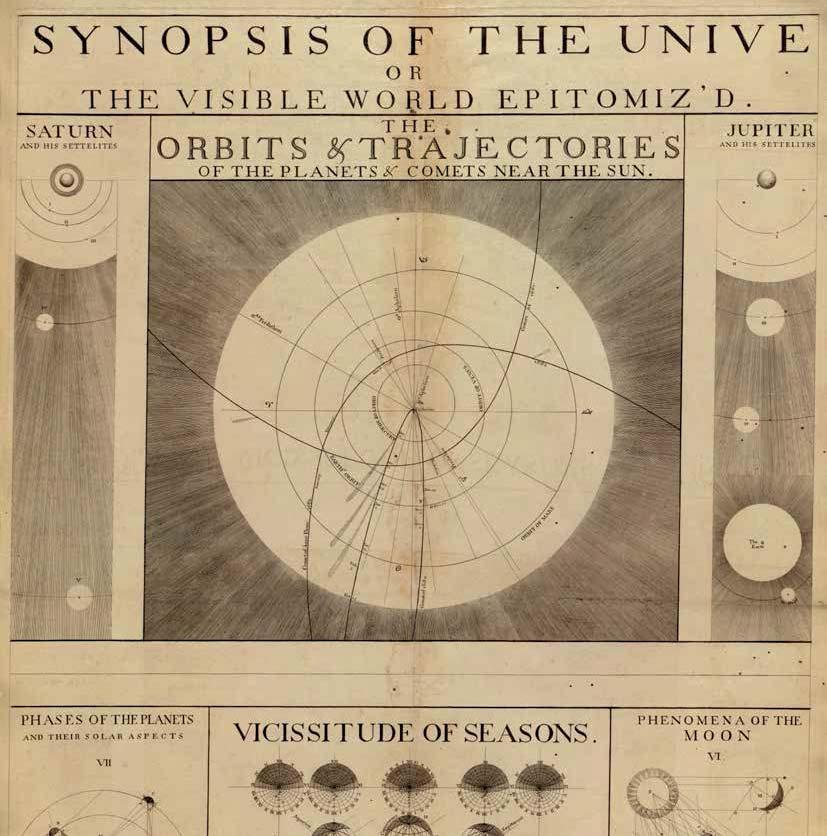
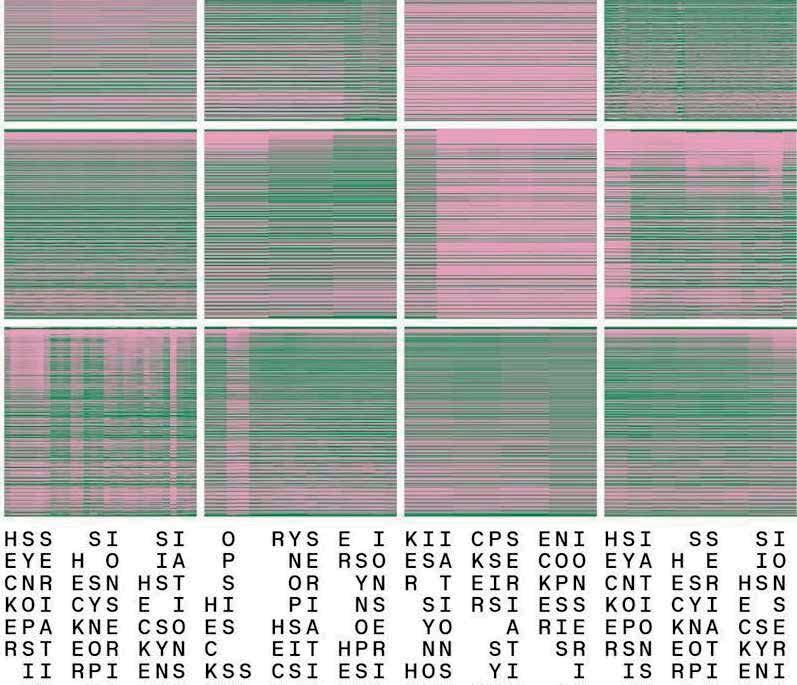
Introduction
My graduation project is based on current scenarios that I have been in my recent adult life, the changing climate of our one precious earth and the ignorance of our culture (beacuse we no longer believe in gods but brands). We are westernised to such an extent by the bollywood and social media that we rarely question real stuff in our society and its changing behaivor. We are so molded by media that now it is so hard to know what is true and what not !!
The way I will be presenting my work will be a lot different just like every graduation project should be, IICD is a home to students from different states where they speak different language and have entirely different culture altogether and yet IICD wants a standarised project like every craft is exactly the same like other. When Marshall McLuhan said, “The Medium is the Massage”, I think people at IICD literally misunderstood it because people look at more of screens than the books in shelves !!
*** This is not an ordinary graduation project ***
*** This is not to come to an end anytime soon but only add-on further in space and time. This will be an extension of my world view, which have been largely enlarged in my recent last year. The way I conceive the world, my interactions with people online, offline; objects and ideas, which I have tired to expand on in this compilation. There will be a lot of references to support and make-understand my opinions.
Things will be added to this document even after the jury comes to an end, its a journey I overtook that will go on...
My work is build upon the ideas and constructs of Ideefix (A4 Achaar), the busride studio, yatharth, craft futures and many more who have explored the crafts with new and different eyes.
This is for those who never stop questioning and always starts a question with a “What If”, for the dreamers who are merely sailing on this cosmic fabric.
...of Mr Lévi-Strauss’s recurring themes. He worried about the growth of a “mass civilization,” of a modern “monoculture.” He sometimes expressed exasperated self-disgust with the West and its “own filth, thrown in the face of mankind.”
Jaipur
Before I beginning, I want to first introduce the city of Jaipur in which the school of craft and design exists. The story of arts and crafts in the city goes way back to 18th century when Maharaja Sawai Jai Singh II established 36 Karkhana (36 workshops or 36 departments) for better maintenance of administration, trade and commerce of the city. Karkhana is a word of Persian origin, widely used in South Asia. It is generally translated as ‘factory’ or ‘workshop’, but encompasses many other meanings. Most of these crafts came with the Mughals and had been once done in Persia in one form or the other. Eventually due to inadequate resources many Karkhanas gradually started declining and were finally closed.
12 workshops are still in working condition and open for tourists for demonstration purpose. These 12 workshops are -
1. Kapatdwara
2. Surat khana
3. Sileh Khana
4. Farrash Khana
5. Pothikhana
6. Bagghi Khana
7. Imarat
8. Mistri Khana
9. Naubat Khana
10. Karkhana Punya
11. Bagayat
12. Gunijankhana
The royal family that once ruled the region and that, in 1727, founded what is now called the Old City, or “Pink City” for its trademark building color. At the center of its stately street grid (notable in India) stands the opulent, colonnaded City Palace complex. With gardens, courtyards and museums, part of it is still a royal residence.
From gem cutters to weavers, artisans have long been synonymous with India’s Pink City, but Jaipur’s craft heritage continues to evolve. In recent years, Western designers have immigrated here and are learning from and employing skilled locals.
 Jacob, S. S. Col. (1890)
W. Griggs aand Sons (London)
Jacob, S. S. Col. (1890)
W. Griggs aand Sons (London)
https://www.instagram.com/anniespratt/

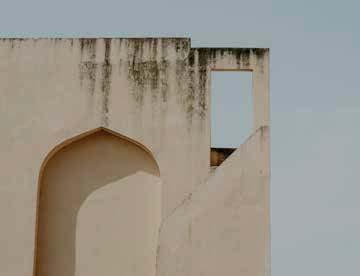



BATI CHURMA mass civilization monoculture
DAL
Ignorance of your own culture is not considered cool.

Indian Institute of Crafts & Design




Need for the creation of an institution of excellence that ischarged with the mission of developing the craft sector in an integratedmanner. Design, defined in the broadest possible sense, shall be the disciplineused and nurtured by this institute to effect the envisaged developmentmission and to realise its objectives.
It is in order to generate a new cadre of highly motivated and creatively oriented designtechno-managers in sufficient numbers, that this institution needs to be broad based in its constitution and its activities. All the existing agencies currently working in the area of crafts promotion and development would be greatly benefited from drawing on this trained human resource which would provide them with the kind of specifically trained competence that is not available in the country today.








The creative facilitators generated by this Institute would catalyse productive action in direct collaboration withgroups of craftspersons at multiple centres that are widely distributed and decentralised. These catalytic change agents will be the seeds that will provide the roots for a sustained programme of growth and development of both the crafts sector and of the craftspersons involved that would be qualitatively far superior to what we have hitherto experienced.
Hard Material Application
The programme focuses on specialization in various materials like wood, metal, stone, cane & bamboo and other allied materials. The course is structured to strengthen craft aesthetics and design sensibilities of individuals.
The students are given enough critical inputs to develop their own language, style and concept. They are encouraged to learn various craft techniques while working along with artisans in the field.
Career Prospects
- To work as crafts designer in design houses.
- To work as craft manager in NGOs and other social organisations.
- To start enterprise in the field of crafts.
- To work as researcher for different organisations

“Every work of art is the child of it’s age and, in many cases, the mother of our emotions. It follows that each period of culture produces an art of its own which can never be repeated.”
~ Wassily Kandinsky
Scène de design à Paris
Design Scene in Paris
Paris was the centre of an explosion of philosophic and scientific activity known as the Age of Enlightenment. Diderot and d’Alembert published their Encyclopédie in 1751, and the Montgolfier Brothers launched the first manned flight in a hot-air balloon on 21 November 1783, from the gardens of the Château de la Muette. Paris was the financial capital of continental Europe, the primary European centre of book publishing and fashion and the manufacture of fine furniture and luxury goods.
At the beginning of the 20th century, artists from around the world including Pablo Picasso, Modigliani, and Henri Matisse made Paris their home. It was the birthplace of Fauvism, Cubism and abstract art, and authors such as Marcel Proust were exploring new approaches to literature.
LIGHT ACADEMIA
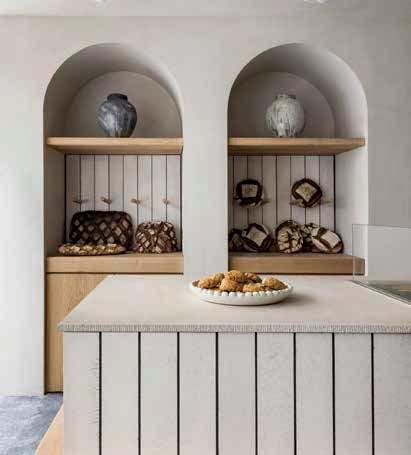
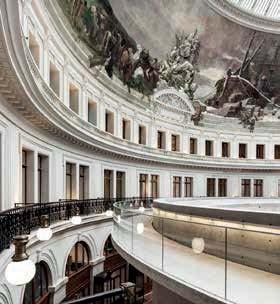
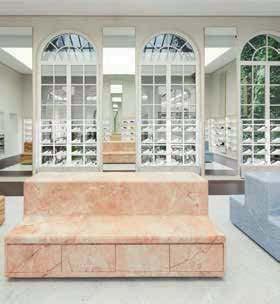
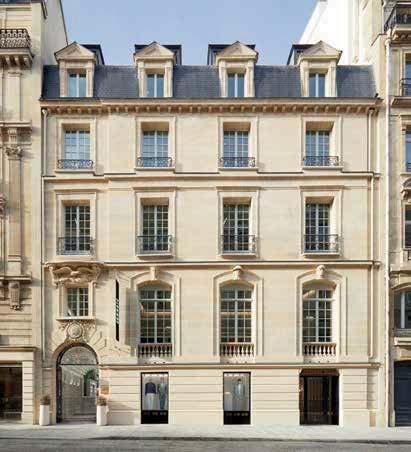
HAUTE COUTURE AVANT-GRADE
bricolagedecorating soul

Bricolage is a French loanword that means the process of improvisation in a human endeavor. The word is derived from the French verb bricoler (“to tinker”), with the English term DIY (“Do-it-yourself”) being the closest equivalent of the contemporary French usage. In both languages, bricolage also denotes any works or products of DIY endeavors.
As a child , Claude Lévi-Strauss loved to collect disparate objects and juxtapose them. “I had a passion for exotic curios,” he said in “Conversations.” “My small savings all went to the secondhand shops.”
https://www.lumierebricoleur.com/
TINKER ASSEMBLAGE LOST & FOUND
 Rube Goldberg’s contraption (Kinect Art)
Rube Goldberg’s contraption (Kinect Art)
In The Savage Mind (1962), the French anthropologist Claude LeviStrauss used the word bricolage to describe the characteristic patterns of mythological thought. Bricolage is the skill of using whatever is at hand and recombining them to create something new. Levi-Strauss compares the working of the bricoleur and the engineer. The bricoleur, who is the “savage mind”, works with his hands in devious ways, puts pre-existing things together in new ways, and makes do with whatever is at hand. What Levi-Strauss points out here is that signs already in existence are used for purposes that they were originally not meant for.
The working of the bricoleur is parallel to the construction of mythological narratives. As opposed to the bricoleur, the engineer, who is the “scientific mind”, is a true craftsman in that he deals with projects in entirety, taking into account the availability of materials, and creating new tools. Drawing a parallel, Levi-Strauss argues that mythology functions more like the bricoleur, whereas modern western science works more like an engineer. He suggests that the engineer creates a holistic totalising system, in which there are elements of permanence.
 SCENTURY by Helder Suffenplan
SCENTURY by Helder Suffenplan

@droog, things are never what they seem and never seem to be what they are.

“Was Droog Design a generation of young designers? That’s what it appeared to be. Or was it a movement? Not really. A collective, perhaps? A label? A manifesto? It was none of the above and all of them at once, but never at the same moment – certainly not for the long term.” – Wim Pijbes in “Renny Ramakers – Rethinking Design” by Aaron Betsky, 2019.
It all started in 1993 when art historian Renny Ramakers and designer Gijs Bakker presented a collection of works from a group of young Dutch designers at the Salone del Mobile in Milan under the name ‘Droog’. Ramakers and Bakker had noticed a fresh trend in design in the use of everyday, recycled materials, combined with a down-to-earth mentality. The designs where simple yet humoristic – literally ‘dry’; ‘Droog’ in Dutch.



simplicity doesn’t have to be boring !!
Bauhaus
1. Go back to basics
2. Form follows function
3. Break the rules
4. Think big even when your work is “small”
5. Get your hands dirty
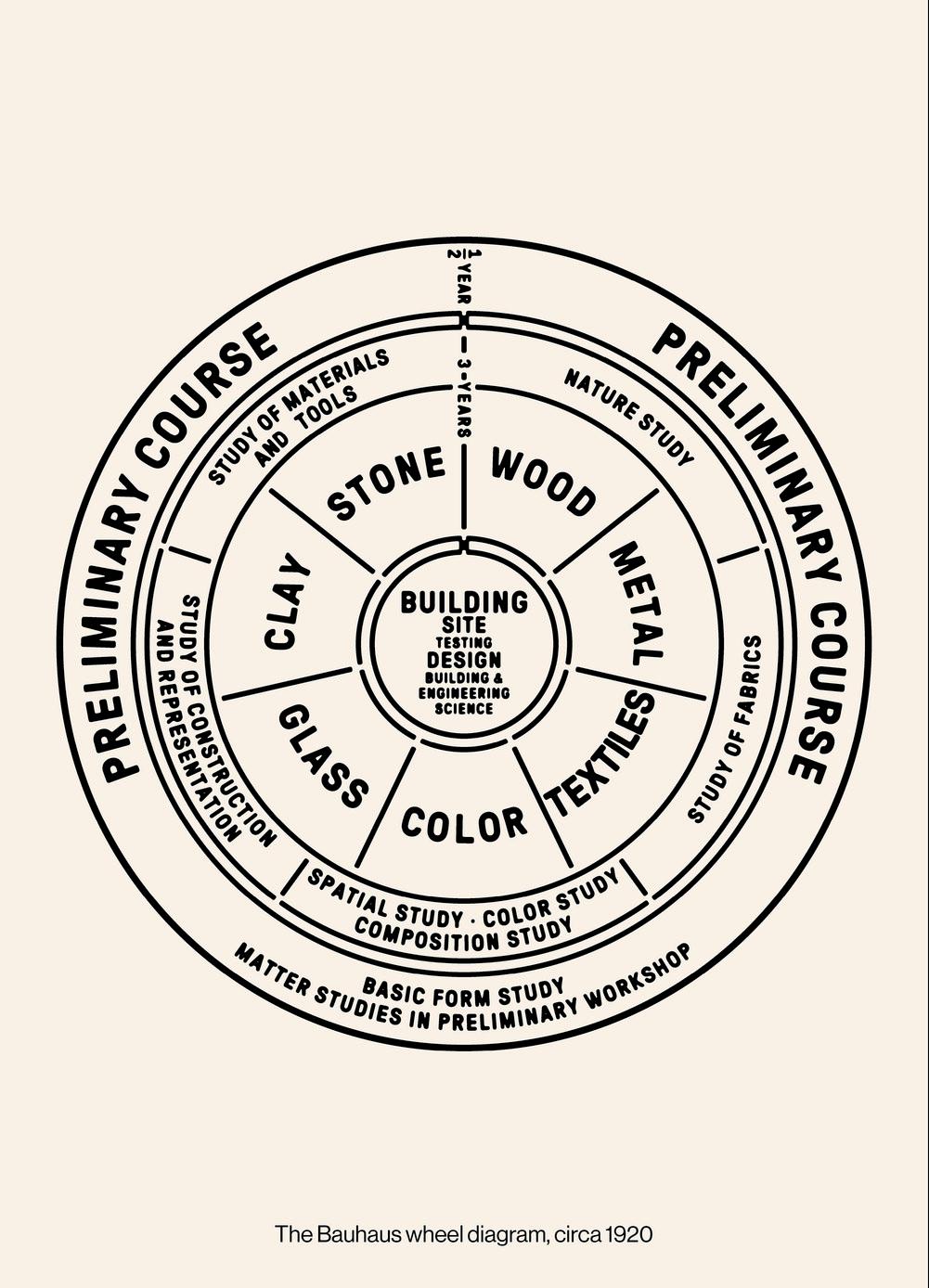
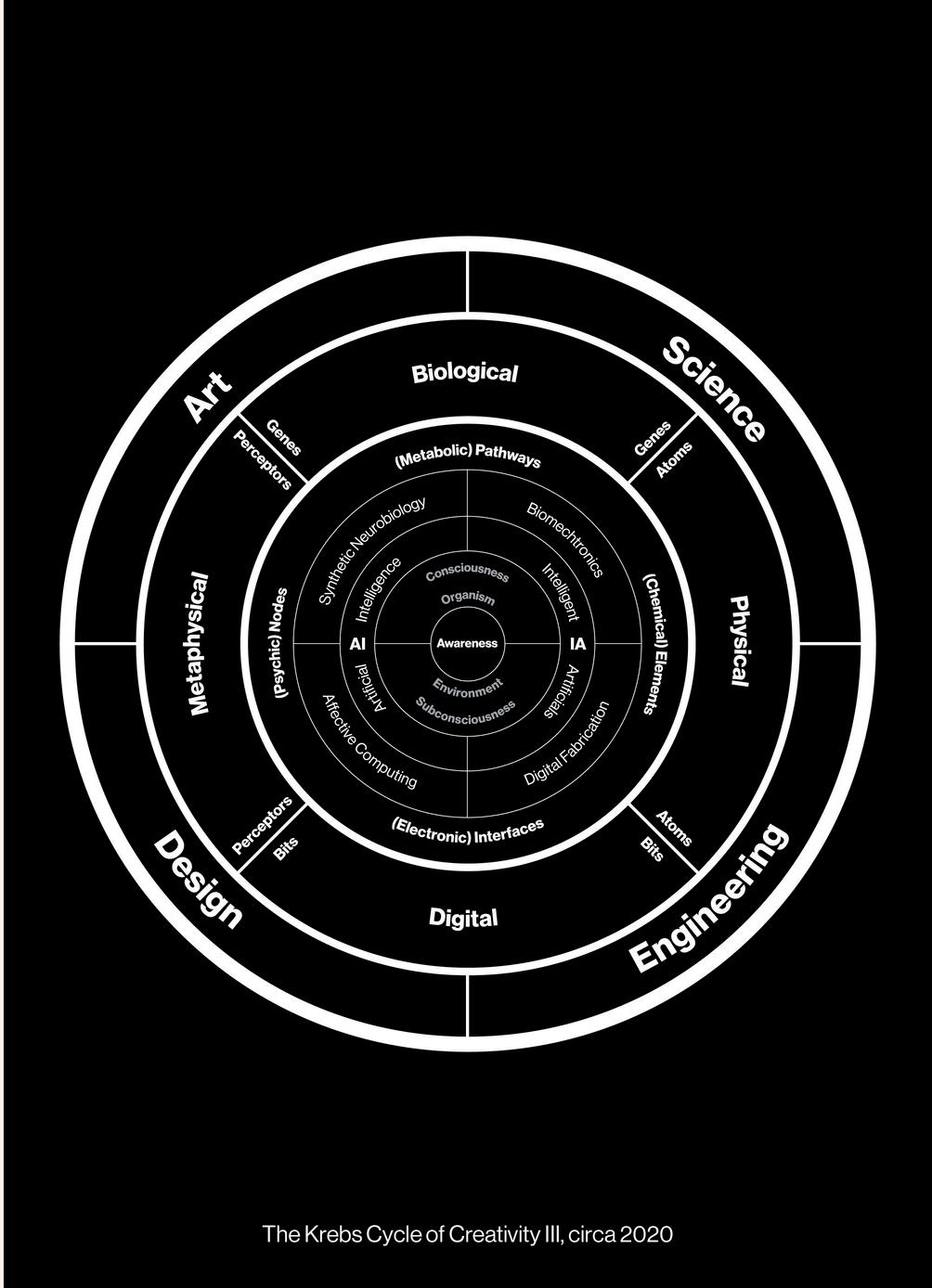
Kerb Cycle of Creativity
The Krebs Cycle is akin to a metabolic clock that first generates, then consumes, then regenerates currency in the form of ATP (Adenosine Triphosphate) over time. Crudely expressed: good metabolism will make you constantly rich. By the same token, can intellectual digestion—the kind that demands you shift views and perspectives—make you constantly intellectually rich?
The Krebs Cycle of Creativity (KCC) is a map that describes the perpetuation of creative energy (creative ATP or ‘CreATP’), analogous to the Krebs Cycle proper. In this analogy, the four modalities of human creativity—Science, Engineering, Design and Art—replace the Krebs Cycle’s carbon compounds. Each of the modalities (or ‘compounds‘) produces ‘currency’ by transforming into another.
The role of Science is to explain and predict the world around us; it ‘converts’ information into knowledge. The role of Engineering is to apply scientific knowledge to the development of solutions for empirical problems; it ‘converts’ knowledge into utility. The role of Design is to produce embodiments of solutions that maximize function and augment human experience; it ‘converts’ utility into behavior. The role of Art is to question human behavior and create awareness of the world around us; it ‘converts’ behavior into new perceptions of information, re-presenting the data that initiated the KCC in Science.
The KCC is designed as a circle with the four modalities of creativity preserved in their original location from the “Rich Gold matrix.” As you transition from one into the other, you generate and spend currency in the form of intellectual energy, or CreATP. Science produces knowledge that is used by engineers. Engineering produces utility that is used by designers. Designers produce changes in behavior that are perceived by artists. Art produces new perceptions of the world, thereby granting access to new information in and about it, and inspiring new scientific inquiry.
what ex- actly is craft ?! ?!
1. 2. 3.
Etymology -

Old English cræft ‘strength, skill’, of Germanic origin; related to Dutch kracht, German Kraft, and Swedish kraft ‘strength’. craft (sense 3 of the noun), originally in the expression small craft ‘small trading vessels’, may be elliptical, referring to vessels requiring a small amount of ‘craft’ or skill to handle, as opposed to large ocean-going ships.
Meaning
verb: craft; 3rd person present: crafts; past tense: crafted; past participle: crafted; gerund or present participle: crafting exercise skill in making (an object), typically by hand.

“he crafted the chair lovingly”
No matter what you do, whether you cook, play, drive or built. If you practice it enough, its your craft. In simple words, practice is craft, craft is practice; a neverending pursuit for prefection. So, what’s your craft ?! What do you practice ?!


_risis C
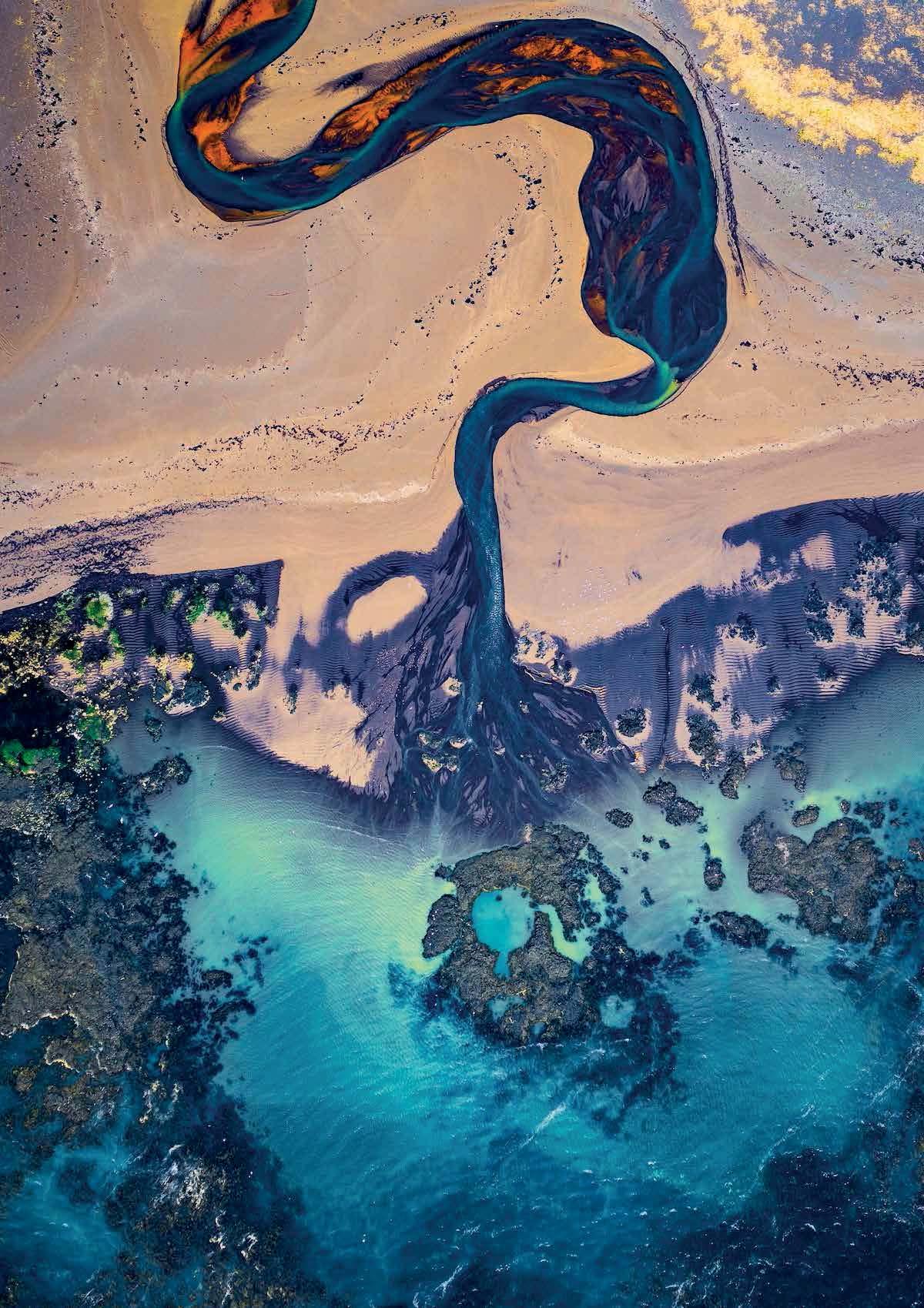
Climate cHnaGe
The planet is on track to see a climate it hasn’t seen in thousands of years—if not hundreds of thousands. Climate impacts are no longer matters of the future; they’re happening now.
This is the dose of reality offered in the latest assessment report from the Intergovernmental Panel on Climate Change (IPCC), the leading governmental climate organization within the U.N. that represents some 195 countries and their scientific communities. “Every region across the globe” is feeling those effects now, per the report.
The report itself outlines where we already are in terms of warming: 1.07 degrees Celsius above pre-industrial levels. Scientists have been sounding the alarm for years that our emissions are already influencing weather patterns. We only need to look to the last year to see how the climate crisis is unfolding: wildfires out West, heat waves up north, and hurricanes down the South. Elsewhere, fires, floods, and droughts have ravaged communities across continents.
The level of catastrophe to come all depends on public and private leaders and their ability to not only cut emissions—but to keep carbon in the ground. As we shift toward clean energy, we must also protect our natural carbon sinks to prevent any more greenhouse gases from leaking into the atmosphere. The IPCC found a 66 to 100% likelihood that anthropogenic behavior is to blame depending on what section you’re looking at. That’s not a lot of room to be wrong.
“The reality is that this is no longer about future projections,” said Rachel Cleetus, policy director of the Union of Concerned Scientists’ Climate and Energy Program who wasn’t involved in the report. “This is about here and now.”
“If Earth was an apartment, we wouldn’t be getting our security deposit back.”
~ Jimmy Shubert
Eco-anxiety
Climate change causes a number of psychological effects on the earth’s inhabitants. These include emotional states such as eco-anxiety, eco-grief and eco-anger. While unpleasant, such emotions are often not harmful, and can be rational responses to the degradation of the natural world, motivating adaptive action. In the 21st century, academics, medical professionals and various other actors are seeking to understand these impacts, in order to assist in their relief, make more accurate predictions, and to assist efforts to mitigate and adapt to global warming.
There are three broad channels by which climate change affects people’s mental state: directly, indirectly or via awareness. The direct channel includes stress related conditions being caused by exposure to extreme weather events. The indirect pathway can be via disruption to economic and social activities, such as when an area of farmland is less able to produce food. And the third channel can be of mere awareness of the climate change threat, even by individuals who are not otherwise affected by it. There are many exceptions, but generally it is people in developing countries who are more exposed to the direct impact and economic disruption caused by climate changes. Whereas recently identified climate related psychological conditions like eco-anxiety, which can result just from awareness of the threat, tend to affect people across the planet.
The psychological effects of climate change are investigated within the field of climate psychology. Various non clinical treatments, group work options, internet based support forums, and self-help books are available for people suffering from less severe psychological conditions. Some of the psychological impacts require no form of treatment at all, and can even be positive. The psychological effects of climate also receive attention from governments and others involved in creating public policy, by various campaigning groups and NGOs, and by private sector firms.
ECOTOPIA ANTHROPOCENE MEGHALAYAN OVERCONSUMPTION

“Humankind has not woven the web of life. We are but one thread within it. Whatever we do to the web, we do to ourselves. All things are bound together. All things connect.”
~ Chief Seattle
LEADER OF THE SUQUAMISH AND DUWAMISH NATIVE AMERICAN TRIBES
economy Circular
Looking beyond the current take-make-waste extractive industrial model, a circular economy aims to redefine growth, focusing on positive societywide benefits. It entails gradually decoupling economic activity from the consumption of finite resources, and designing waste out of the system. Underpinned by a transition to renewable energy sources, the circular model builds economic, natural, and social capital. Based on three principles:
- Design out waste and pollution
- Keep products and materials in use
- Regenerate natural systems
In a circular economy, economic activity builds and rebuilds overall system health. The concept recognises the importance of the economy needing to work effectively at all scales – for large and small businesses, for organisations and individuals, globally and locally.
Transitioning to a circular economy does not only amount to adjustments aimed at reducing the negative impacts of the linear economy. Rather, it represents a systemic shift that builds long-term resilience, generates business and economic opportunities, and provides environmental and societal benefits.
According to me, Circular Economy is a partial way but what we actually need to change is our behaviour and our mindset. Circular Economy is more about Economy than the circularity !!
UPCYCLE REGENERATIVE LOOP ANALYSIS

LowTechnology
Low technology (low tech; adjective forms: low-technology, low-tech, lotech) is simple technology, opposed to high technology. They often refer to a traditional or non-mechanical kind, such as crafts and tools that predate the Industrial Revolution.
Low technology can simply be practiced or fabricated with a minimum of capital investment by an individual or small group of individuals. Also, the knowledge of the practice can be completely comprehended by a single individual, free from increasing specialization and compartmentalization. In some definition, low-tech techniques and designs may fall into disuse due to changing socio-economic conditions or priorities. Overall, these technologies are easily fabricable, adaptable and reparable, and use little energy and resources (that all come from local sources) to stay on the whole eco-friendly.
Low-techs are present in everyday life. For example, biking to work or repairing your own devices instead of throwing them away corresponds to the low-tech philosophy.
Groups associated with low-technology
- Arts and Crafts Movement
- Bauhaus movement of Germany around the same time.
- Do-It-Yourself phenomenon arising in America following World War II.
- Back-to-the-land movement beginning in America during the 1960s.
- Luddites, the very beginning of the Industrial Revolution.
- Living history & open-air museums to recreate bygone societies.
- Simple living adherents, as the Amish and some sects of the Mennonites, who refused newer tech to avoid undesirable effects on their societies.
- Survivalists are often proponents, since low-technology is inherently more robust than its high-technology counterpart.
ROMANTICISM PUNKISTAN SUBLIME
 Acoustic Locator - World War One
Acoustic Locator - World War One
today’s Waste, tomorrow’s Raw Material
(Cyclical systems) (Linear)
take-make-discard
Harvest alternative raw goods from industrial and domestic waste streams and landfills
Traditional raw materials
- Finite
- Expensive
Our addiction
- New technology
- Abetted by short product life cycles
- Culture of rapid upgrades
Over-consumption — Scare resources — reclaim materials
- Environnemental benefits
- Innovations signal
Waste
- Abundant
- Cheap
Turning their attention to our household rubbish and industry’s scrap as a source of innovative raw materials
Vast waste streams of discarded metal, glass, plastics and rare earth minerals.
America (USEPA) 9.4 millions tons of e-waste for every ton
- 16,000 kg copper
- 350 kg silver
- 34 kg good
- 15 of palladium
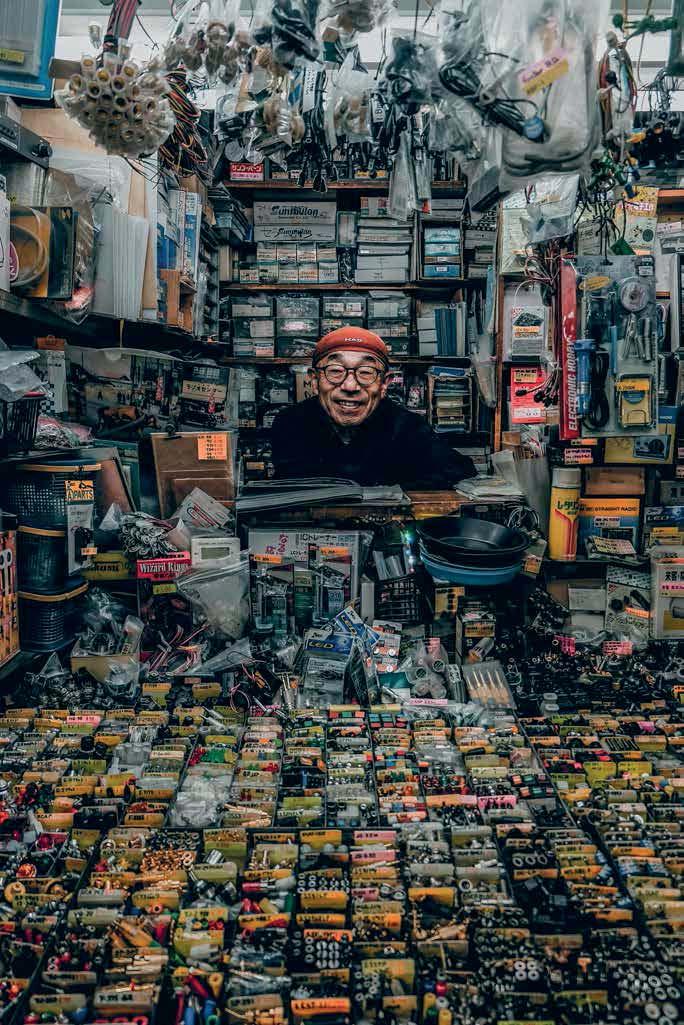
Recycle the essential guide by Lucy
Siegle
“Rich countries have a special responsibility for global environment stewardship, both because they have the capital to invest in new technologies and because they are the primary producers of waste and carbon dioxide emissions. Recycling is crucial in developing countries as it is elsewhere. However, poorer societies tend to have a different approach to waste-after all, when resources are scare, anything is a fair game, and rubbish is often re-used in the most inspired, imaginative ways.”
Humankind seems keenest on recycling when resource extraction is difficult.
“It was the industrial revolution that put the brakes on recycling in a big way. It marked a waste shed, than labour and suddenly there was no need to worry. You could also argue that it sowed the seeds for the global economy which countries to have an impact on waste today, as global trading went up several notches. When the world, and it’s associated mineral deposits and natural resources, is your oyster, why worry about eking out resources ?”
But now we do need to worry. Over the past 50 years humankind has altered ecosystems more extensively than at any comparable period of time in history. This has largely been in order to meet growing demands for food, freshwater, timbre, fibre and fuel, resulting in a substantial and largely irreversible loss in the diversity of life on earth. If you’re looking for further evidence, you can always read the 2005 Millennium Ecosystem. Assessment, produced by 1300 researchers from 95 countries. As this volume weighs in at some 2,500 pages, it’s probably best to turn to the executive summary, the gist of which is that two thirds of the earth’s lifesustaining ecosystems are under threat to collapse. If this is not a driver fro recycling, I don’t know what is.
Speaking out when it’s unpopular. Back in the day, Henry David Thoreau raged at the robber barons-the big shots of their age, despoiling the environment in the name of progress. Deep in the throes of the seemingly unstoppable growth of tech, a modern-day Thoreau has emerged in the guise of Gerry McGovern-decrying the massive, hidden negative impacts of tech on the environment. McGovern has thoroughly documented in World Wide Waste how tech damages the Earth-and what we should be doing about it. It is not just the acres of discarded computer hardware conveniently dumped in Third World countries. Every time an email is downloaded it contributes to global warming. Every tweet, search, check of a webpage creates pollution. Digital is physical. Those data centers are not in the Cloud. They’re on land in massive physical buildings packed full of computers hungry for energy. It seems invisible. It seems cheap and free. It’s not. Digital costs the Earth.
 Michel Blazy
Michel Blazy

Design Brief #01
An anthropocene enquiry into the future of practices through speculation. What’s the digital material? Can I touch it?
How can we re-imagine and re-make the stuff around us ?
With resources depleting at an enormous rate, how will be “the practice of making,” in the future?
The three critical questions that I wanted to explore and even further after my graduation.
- Future of practices in our fast-paced life
- New narratives of crafts and how to keep past / traditions / heritage alive. Should crafts be left to die ?!
- How good is a technology for handmade things?
~appearance ~surface ~materiality
Gold is for the mistress -- silver for the maid -Copper for the craftsman cunning at his trade.”
“Good!” said the Baron, sitting in his hall, “But Iron -- Cold Iron -- is master of them all.”
So he made rebellion ‘gainst the King his liege, Camped before his citadel and summoned it to siege. “Nay!” said the cannoneer on the castle wall, “But Iron -- Cold Iron -- shall be master of you all!”
Woe for the Baron and his knights so strong, When the cruel cannon-balls laid ‘em all along; He was taken prisoner, he was cast in thrall, And Iron -- Cold Iron -- was master of it all!
Yet his King spake kindly (ah, how kind a Lord!)
“What if I release thee now and give thee back thy sword?”
“Nay!” said the Baron, “mock not at my fall, For Iron -- Cold Iron -- is master of men all.”
“Tears are for the craven, prayers are for the clown -Halters for the silly neck that cannot keep a crown.”
“As my loss is grievous, so my hope is small, For Iron -- Cold Iron -- must be master of men all!”
Yet his King made answer (few such Kings there be!)
“Here is Bread and here is Wine -- sit and sup with me. Eat and drink in Mary’s Name, the whiles I do recall How Iron -- Cold Iron -- can be master of men all!”
He took the Wine and blessed it. He blessed and brake the Bread. With His own Hands He served Them, and presently He said: “See! These Hands they pierced with nails, outside My city wall, Show Iron -- Cold Iron -- to be master of men all.”
“Wounds are for the desperate, blows are for the strong. Balm and oil for weary hearts all cut and bruised with wrong. I forgive thy treason -- I redeem thy fall -For Iron -- Cold Iron -- must be master of men all!”
“Crowns are for the valiant -- sceptres for the bold! Thrones and powers for mighty men who dare to take and hold!”
“Nay!” said the Baron, kneeling in his hall, “But Iron -- Cold Iron -- is master of men all! Iron out of Calvary is master of men all!”
Cold Iron - Rudyard Kipling

RITUALS ORNAMENTAL PRACTICES
Tibetan ritual skull with elaborate silver work and Garuda on the forehead XIXe
_enesis G




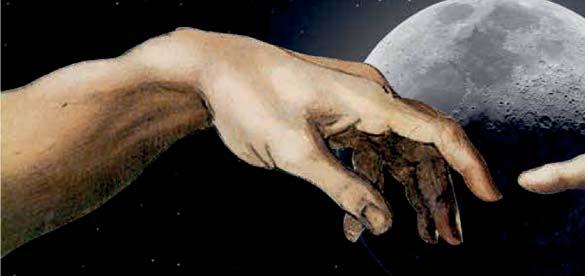


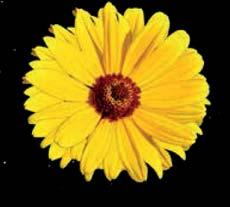





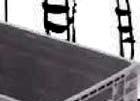



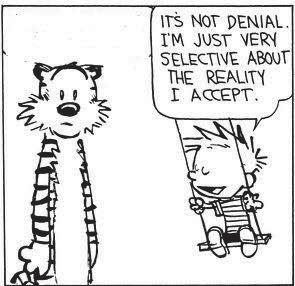


understanding craft
The crafts of India are diverse, rich in history, culture and religion. The craft of each state in India reflect the influence of different empires. Throughout centuries, crafts have been embedded as a culture and tradition within rural communities.
Handicraft - The act of ‘hand-crafting an object to suffice a daily chore; to pacify a need of faith; as an artistic expression; or perhaps to hone the dexterity of a pair of hands. This act of ‘crafting’ is but the most potent proof of the ‘civil-ness’ within any civilization. The ancient act of crafting almost always is a reflection of the times... and sometimes is powerful enough to make time itself its reflection.
Handicrafts have weathered many a storms at the hands of increased industrialization and overall paradigm shifts in the crafts’ production and consumption ecosystem. The global consumer now slowly wakes to the actual ecological price that the increasingly mechanized and plasticaddicted industries entail. They are more willing now than ever before to hear and pay heed to the tales of craft.
Although an interest to retain the culture of crafts is seen in designers and institutions. Handicrafts are the creative products made by the skill of the hand without the help of modern machinery and equipment. Nowadays, hand-made products are considered to be a fashion statement and an item of luxury.
India’s rich cultural heritage and centuries of evolutionary tradition is manifested by the huge variety of handicrafts made all over the country. Handicrafts are a mirror of the cultural identity of the ethnic people who make it.
Through the ages, handicrafts made in India like the Kashmiri woollen carpets, Zari embroidered fabrics, terracotta and ceramic products, silk fabrics etc. have maintained their exclusiveness. In the ancient times, these handicrafts were exported to far off countries of Europe, Africa, West Asia and Far East via the ‘silk route’. The entire wealth of timeless Indian handicrafts has survived through the ages. These crafts carry the magnetic appeal of the Indian culture that promises exclusivity, beauty, dignity and style.

objects
”Now here is the challenge: In its long history, design practice has done a marvellous job of inventing the practical skills for drawing objects, from architectural drawing, mechanic blueprints, scale models, prototyping etc. But what has always been missing from those marvellous drawings (designs in the literal sense) are an impression of the controversies and the many contradicting stake holders that are born within with these. In other words, you in design as well as we in science and technology studies may insist that objects are always assemblies, “gatherings” in Heidegger’s meaning of the word, or things and Dinge, and yet, four hundred years after the invention of perspective drawing, three hundred years after projective geometry, fifty years after the development of CAD computer screens, we are still utterly unable to draw together, to simulate, to materialize, to approximate, to fully model to scale, what a thing in all of its complexity, is.” Bruno
Latour
We think with the objects we love; we love the objects we think with.
… no one man could have possibly designed the lota. The number of combinations of factors to be considered gets to be astronomical – no one man designed the lota but many men over many generations. Many individuals represented in their own way through something they may have added or may have removed or through some quality of which they were particularly aware. The hope for, and the reason for such an institute as we describe, is that it will hasten the production of the ’lotas’ of our time. By this we mean a hope that an attitude be generated that will appraise and solve the problems of our coming times with the same tremendous service, dignity and love that the lota served its time.
~Charles & Ray Eames, The India Report - 1958

LOTA
Objectified is a feature-length documentary film examining the role of everyday non-living objects, and the people who design them, in our daily lives. The film is directed by Gary Hustwit.

One of the most interesting things about tech teardowns is the voyeuristic joy of seeing how something so sleek and familiar on the outside is actually put together.
Technics SL-1200MK7 turntable
As significant to DJ culture as the Les Paul is to rock, Technics’ 7th generation SL-1200 turntable looks virtually unchanged since it was launched 40 years ago, but it does hide a few welcome upgrades. The aluminium die-cast chassis has a two-layer construction featuring a mix of ABS and glass fibre – boosting rigidity and damping vibration – while a completely re-engineered direct-drive motor has ditched the traditional iron core. This, apparently, has eliminated the root cause of “cogging” –stuttering during slow rotations, a major complaint about direct-drive decks. Technics has also included starting-torque and brake-speed adjustments, and, using its newfound ability to play in reverse, Boomers among us can finally hear the hidden message on The Beatles’ “Revolution #9”. It’s shown here with the stereo DJ cartridge Audio-Technica AT-XP7 (£149 audiotechnica.com), which has an extended stylus tip for instant positioning.

https://www.nickveasey.com/
breaking the bubble
India is diverse, multilayered, and rich in traditions with a past still passing by. Today India is able to maintain a ritualistic link with the heritage of the skilled craftsmanship, the remarkable presence of the past and the modern building process used; a high-quality building stone and other traditional materials. Reflecting both the “old” and the “new”; and extending out into Bollywood, one of the most known areas to have adapted this.
The contemporary Indian design of today would not have to be able to exist without the traditional one; as it is distinguished from the autonomous traditions of its ancient past and also what came from outside with people through the silk route and innvasions.
This volume at hand, then opens up a new dialogue between tradition and innovation, between craftsmanship and design and bringing both together to form what is now the contemporary design of India. Paying close attention to climate, flora, light, space, and material, to create a crafted space that adds richer texture and allows it to adapt a deeper meaning into the space; focusing on the essential, minimalist by heart and mood by its soul, being more than an aesthetic tool, instead of meaningful.
Contemporary Indian design is then born out of the cultural influences of its time and place to become the reference of its own culture. As a result, creating a crafted environment that speaks of a journey in time and space.
Craft is what it is and after all these years at IICD, I have know and studied all kinds of craft in all its length and breadth. Every now and then pioneers in the field comes up with the banal and unoriginal dialgoue of how we need to save craft.
We as young graduates need to break that bubble of using those years old traditions and techniques, with new era comes new challenges so does the act to adapt to that change.
As a designer, it becomes necessary to question the exisiting patterns and laws of those age old stories and rituals so that we can go ahead with new stories to tell to our audience/consumers.
With ever changing scenario of technology in 21st century, where exactly does the handicrafts exist ?! What should be the new dialogues in crafts ? With ~7.9 people on this planet which means ~14.8 hands, not all of us can have a desk white-collar jobs. And with these face-paced world, what craft do people choose ? What are the new practices people practices since the beginning of new century ? What should be the new era for handicrafts when craft is nothing but glorified slave labour ?!
CRAFT-ACTIVISM

PROVOCATIVE FUTURES
CONTEMPORARY CRAFT CULTURES
 ideefixe by a4_achaar
ideefixe by a4_achaar
“the observer is not separate from the object observed.”
Homo Faber
Homo faber (Latin for “Man the Maker”) is the concept that human beings are able to control their fate and their environment as a result of the use of tools.
In Latin literature, Appius Claudius Caecus uses this term in his Sententiæ, referring to the ability of man to control his destiny and what surrounds him: Homo faber suae quisque fortunae (“Every man is the artifex of his destiny”).
In older anthropological discussions, Homo faber, as the “working man”, is confronted with Homo ludens, the “playing man”, who is concerned with amusements, humor, and leisure. It is also used in George Kubler’s book, The Shape of Time as a reference to individuals who create works of art.
The classic homo faber suae quisque fortunae was “rediscovered” by humanists in 14th century and was central in the Italian Renaissance.
“WHATEVER LIES STILL UNCARRIED FROM THE ABYSS WITHIN ME AS I DIE DIES WITH ME.”
~Frank Bidart
https://www.nickveasey.com/


to a kid, time always drags. Suddenly you’re 50. All that’s left of your childhood fits in a rusty little box.
~ Amélie (2001)
Intervention Areas
AMORY LOVINS - the next revolution is one of the new materials, of designing from cradle to cradle, as opposed to cradle to grave - i.e landfill
Conventional capitalism >>> Natural capitalism
Materials collected for recycling have already been refined and processed once, this means that manufacturing the second time is usually cleaner and less energy-intensive.
Increasingly, this point will prove to be crucial, both in terms of extending and preserving dwindling resources and protecting the last remaining pristine habitats.
Put starkly, resources mining and stripping is an environmentally destructive practice that ultimately threatens the very survival of our species and the planet.
In fact, there are only two humans made creations visible from outer space, one the Great Wall of China, the other Fresh kills, the New York’s household waste which according to many was an illegal dump, situated in ecologically significant wetlands in the first place.
WASTE DOESN’T GO AWAY.
Can we tap into industrial and domestic waste streams as tomorrow’s source of raw material ?
REGENERATION
REDUCE REUSE RECYCLE REPAIR
REGENERATION REDUCE REUSE RECYCLE REPAIR
REIMAGINE REPURPOSE
REIMAGINE REPURPOSE
REGROW REDISTRIBUTE REVOLUTION
REGROW REDISTRIBUTE REVOLUTION
#trashculture #trashculture #trashculture #trashculture #trashculture #trashculture #trashculture #trashculture #trashculture #trashculture #trashculture
 Octavi Serra
Octavi Serra
Re-Brief
Unparalleled opportunities for exploiting the sheer abundance of discarded materials.
- Intelligent
- Sensitive
- Appealing design
Previous iterations of recycling and repurposing, this is no make-doand-mend culture. The aesthetics achieved by these experimental interventions are the antithesis of typical upcycling and recycling.
Post industry waste - reworking waste
- Eccentric pieces
- Base materials
Material reclamation across the spectrum scale.
Previously been unwanted - a variety of objects of desire.
Sustainability, The raw material used are upcycled through an interplay between salvaged objects and nature. This means they should often end up with one-of-a-kind pieces, where new life is infused into otherwise discarded, or overlooked elements, sourced locally.
How can we give value to the discarded waste ?! Through exuberant work of craftsmanship !!
world wide waste
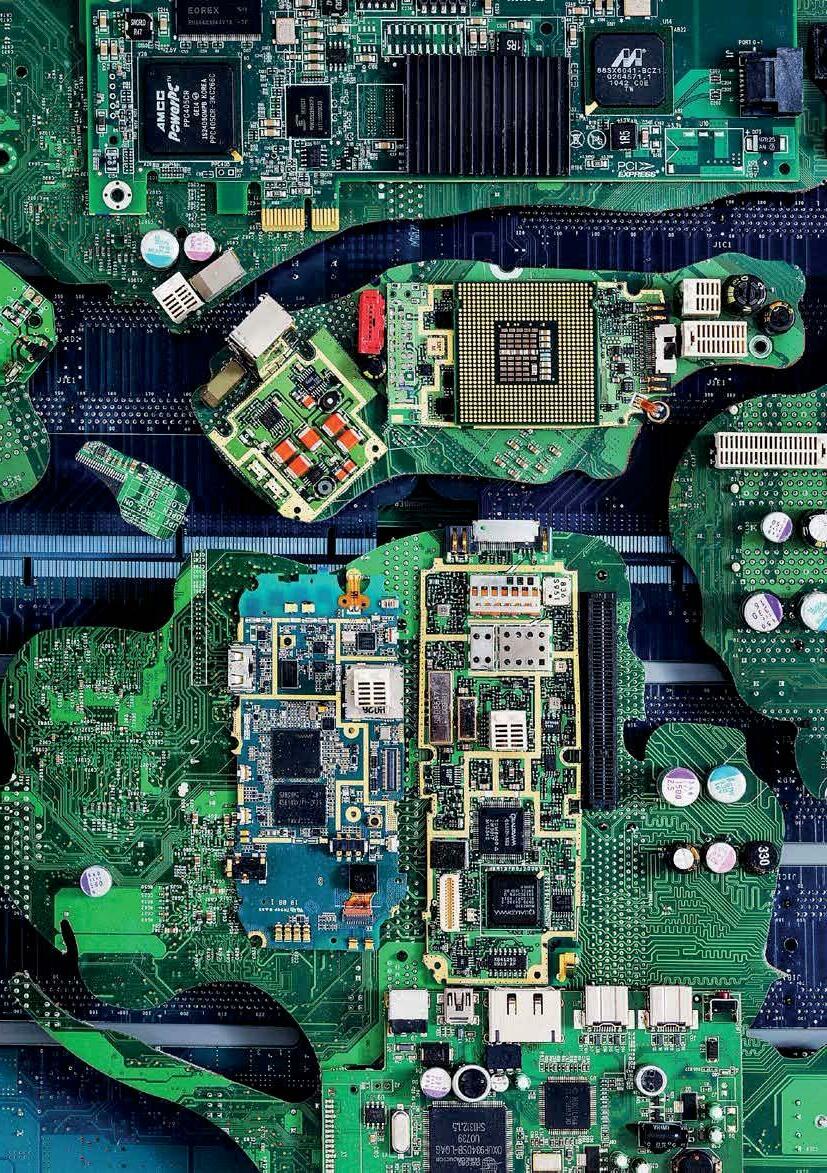
 Fake Fliers by Nathaniel Russell
Fake Fliers by Nathaniel Russell
Antithesis
late Middle English (originally denoting the substitution of one grammatical case for another): from late Latin, from Greek antitithenai ‘set against’, from anti ‘against’ + tithenai ‘to place’. The earliest current sense, denoting a rhetorical or literary device, dates from the early 16th century.
What should become of the things that we discard? As a designer, we should limit the chaos to this already chaotic world. Making/Creating is important but consciously.
How can we know the one without the other ?!
For Mr. Lévi-Strauss, every culture’s mythology was built around oppositions: hot and cold, raw and cooked, animal and human. And it is through these opposing “binary” concepts, he said, that humanity makes sense of the world.
To convey my concept, I am using Antithesis to juxtapose the mass produced waste with craftmanship, a mere literally device !!
meditate for a while on this empty page

A _nalysis






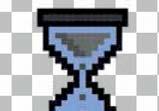



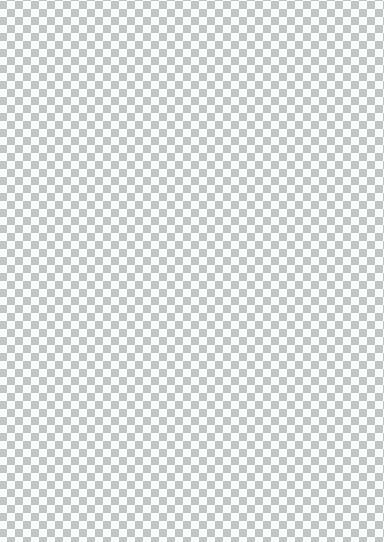

speculation
Speculative design is a design practice that is concerned with future design proposals of a critical nature. The term “speculative design” was popularised by Anthony Dunne and Fiona Raby as a subsidiary of critical design. The aim is not to present commercially-driven design proposals but to design proposals that identify and debate crucial issues that might happen in the future. Speculative design is concerned with future consequences and implications of the relationship between science, technology, and humans. It problematizes this relation by proposing provocative future design scenarios where technology and design implications are accentuated. These provocative design proposals are meant to trigger the debate about future challenges. Speculative design proposals might seem subversive and irreverent in nature as they are meant to initiate discussions not to be market products.
An alchemist, trying to turn rubbish into something special. - Urban Scanvenger
SATIRE COUNTERFACTUALS REDUCTIO AD ABSURDUM AMBIGUITY
instagram.com/studio.oleomingus/

“an activity where conjecture is as good as knowledge, where futuristic and alternative scenarios convey ideas, and where the goal is to emphasize implications of “mindless” decisions for mankind.”
~ Anthony Dunne and Fiona Raby
A/B Manifesto

worldview
Worldbuilding is the process of constructing an imaginary world, sometimes associated with a whole fictional universe. Developing an imaginary setting with coherent qualities such as a history, geography, and ecology is a key task for many science fiction or fantasy writers. Worldbuilding often involves the creation of maps, a backstory, a flora, a fauna, different peoples and their technology, (And in many cases if one is writing speculative fiction, different races), including social customs and, in some cases, an invented language for the world.
ECOTOPIA
“It is so hard to imagine anything fundamentally different from what we have now. But without these alternate visions, we get stuck on dead center. And we’d better get ready. We need to know where we’d like to go.”
~ Ernest Callenbach
SCAVENGER PUNK
Scavenged Punk is a stylized setting that focuses on technology and culture based on an unusual source: scavenged junk. Weapons, tools, clothing, and sometimes entire cities will be built out of repurposed materials. A key factor here is that these materials, often pieces of trash, are being used for something other than their original purpose. This trope shows up almost exclusively in two cases.
IMPROVISATIONAL INGENUITY
Necessity is the mother of invention and sometimes life just refuses to deal you a good hand. People who know how to turn an adverse situation to their advantage and make the most of whatever material they have on hand. Whether it’s exploiting the quirks of their seemingly useless ability, macgyver a device from utter trash or rapidly altering their plans (perhaps
MACGYVERING BAMBOO TECH JUNK PUNK

even inventing a new one on the fly) to account for rapidly changing circumstances. If the character is anthropomorphic, then it’s Resourceful Rodent.
“Among the multitudes of which scamper, fly, burrow and swim around us, man is the only one not locked into his environment. His imagination, his reason, his emotional subtlety and toughness, make it possible for him not to accept the environment but to change it.”
~ Dr. Jacob Bronowski, The Ascent of Man
Housing in Somalia
 NASA’s Pioneer 10 and 11 spacecraft, which launched in 1972 and 1973, carried this design, which was etched on a 15x23-cm gold-anodised aluminium plate.
NASA’s Pioneer 10 and 11 spacecraft, which launched in 1972 and 1973, carried this design, which was etched on a 15x23-cm gold-anodised aluminium plate.
Brainstorming
The spirit and soul of an idea is perhaps a combination of sensory and instinctive awareness and it is not uncommon for products to adopt life characteristics in their make-up.
“An idea can arrive at any time, but it can also be encouraged. It is often thought that the development of an idea is initiated with a brainstorming session: a process where a trigger term is selected and then associations or related analogous themes are communicated.
VERNACULAR TECHNOLOGY
REPAIR AESTHETICS
NOSTALGIC FUTURE
UNFAMILIAR OBJECT
BIZARRE
KRAFT PUNK
BRICOLAGE
LOST & FOUND
JUXTAPOSITION
OTHER-WORDLY
LO-TEK
SCAVENGER
RAG
TEARDOWN
RUG
COSMIC GLITCH
COMMON ODD THINGS
FRUGAL
INDIGENOUS INTELLIGENCE
RETRO
FUTURISTIC
ASSEMBLAGE



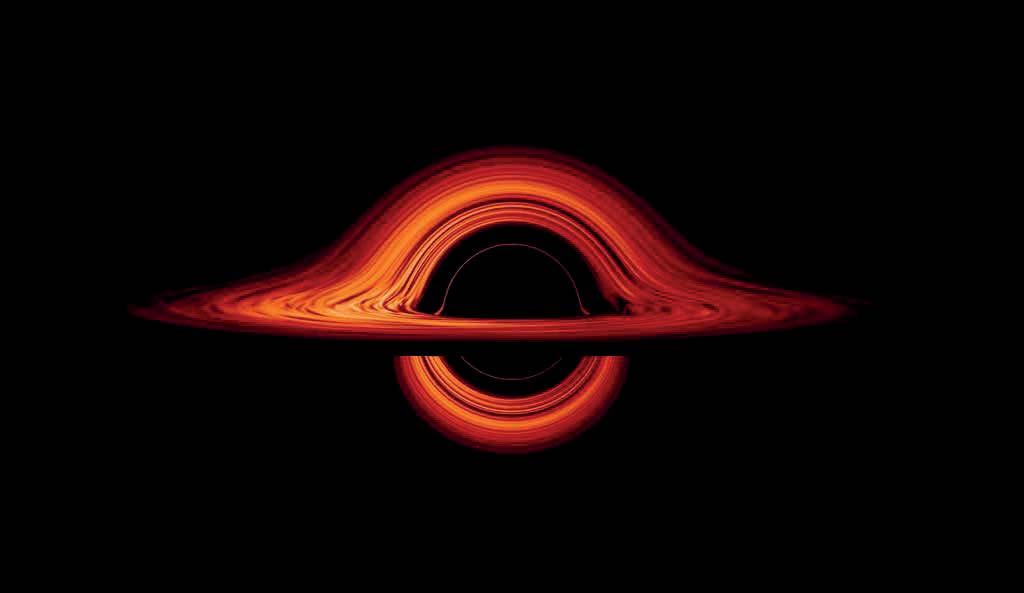
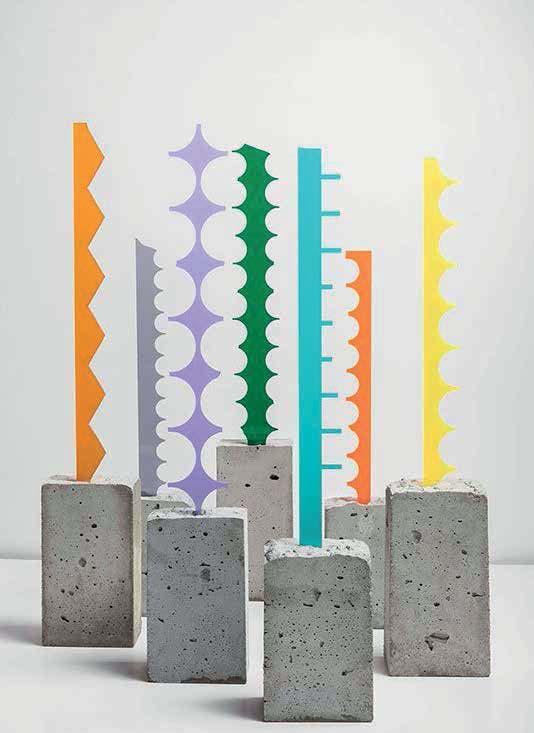
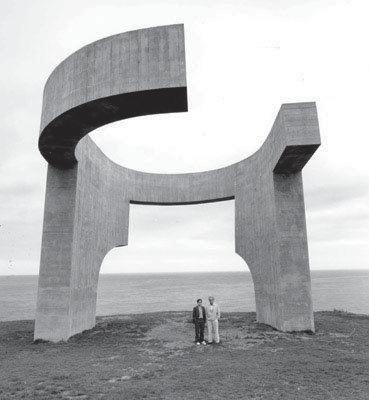

visualstorming
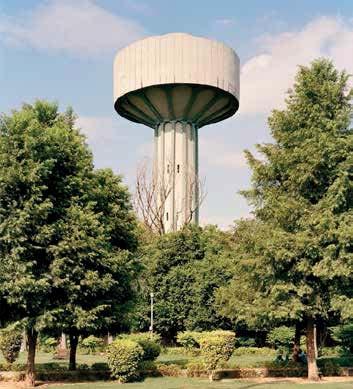



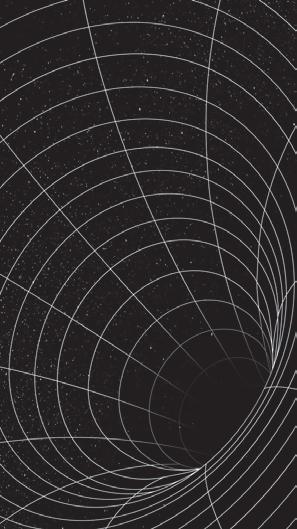
ENIGMATIC BUILT-UNBUILT DISCARDED DELIGHTS ORNAMENTED
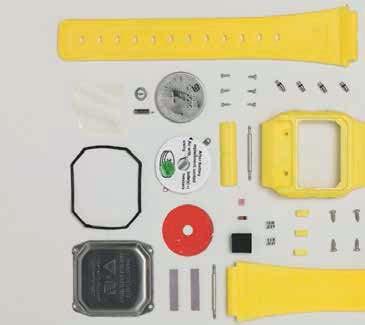
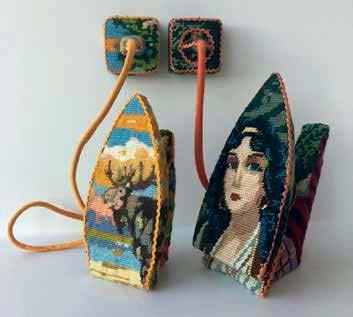
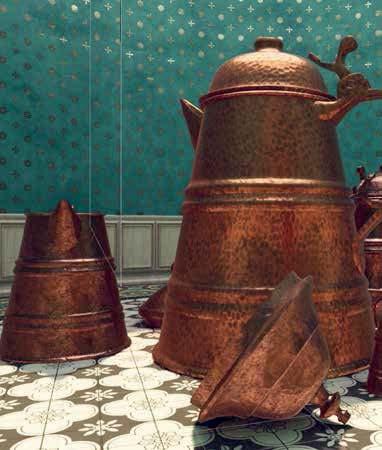
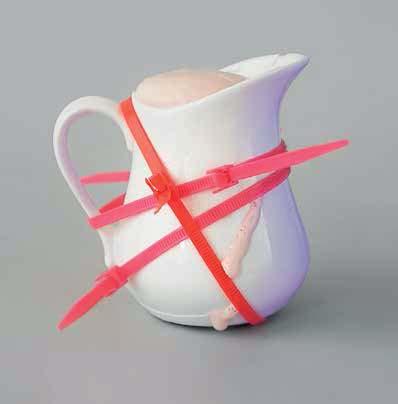

themes
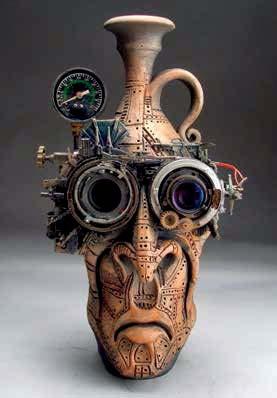
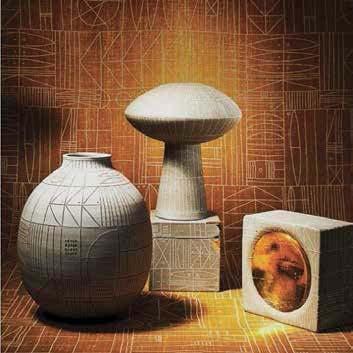
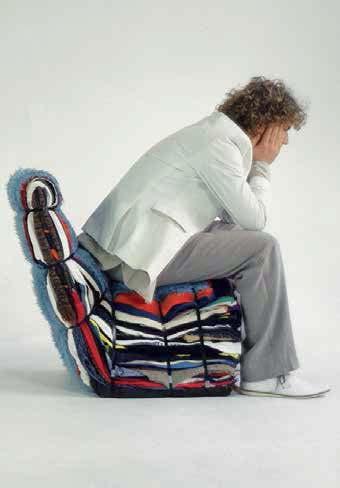
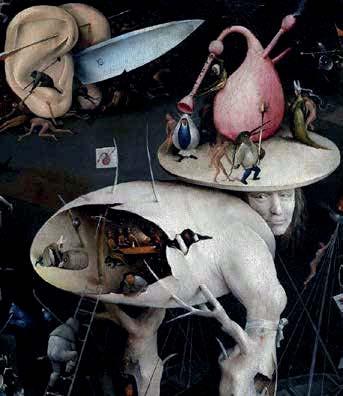

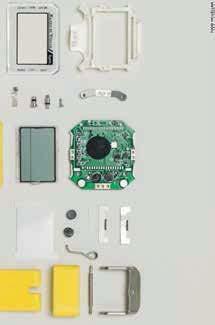

Design Principles
AESTHETIC-USABILITY EFFECT

Aesthetic things are perceived to be easier to use than ugly things.
• Aesthetic things are often subjectively rated as easier to use, even when no usability advantage can be objectively measured.
• Aesthetic things are more effective at fostering positive attitudes than ugly things, making people more tolerant when problems are encountered.
• Aesthetic things are more likely to be tried, accepted, displayed, and repeatedly used than ugly things.
• Aspire to create aesthetically pleasing designs. It is more than ornamentation—it is an investment in user acceptance, forgiveness, and satisfaction.
BIOPHILIA EFFECT
A state of reduced stress and improved concentration resulting from nature views.
• Exposure to natural environments replete with lush green flora and visible water reduces stress and confers restorative cognitive and physical benefits.
• The effect is likely a vestigial response to ancestral habitats, related to the savanna preference.
• Imagery of nature depicted in art and photographs, as well as interior plants, can trigger the biophilia effect.
CLASSICAL CONDITIONING
A method of influencing how people react to a particular thing by repeatedly presenting it with other things they either like or dislike.
• The influence occurs at an unconscious level, and results in a physical or emotional reaction.
• The stronger the reaction to a thing, the easier it will be to generalize that reaction to other things.
• Use classical conditioning to influence emotional appeal. Pair designs with appropriate stimuli to promote positive or negative associations.
COGNITIVE DISSONANCE
A state of mental discomfort due to incompatible attitudes, thoughts, and beliefs.
• Cognitive dissonance is a state of mental stress due to conflicting thoughts or values. It also occurs when new information conflicts with existing thoughts or values.
• When a person is in a state of cognitive dissonance, they seek to make their incompatible thoughts or values compatible with one another.
• For example, diamond sellers urge consumers to demonstrate their love by buying diamonds,
creating cognitive dissonance in consumers—i.e., dissonance between the love that they have for another, and the pressure to prove that love by buying diamonds.
• Consider cognitive dissonance in persuasion contexts. Alleviate cognitive dissonance by reducing the importance of conflicting thoughts, adding new confirmatory thoughts, or changing the conflicting thoughts to appear compatible.
CONTOUR BIAS
A tendency to favor objects with contours over objects with sharp angles or points.

• Things that possess sharp angles or pointed features activate a region of the brain associated with fear.
• The bias likely evolved as a form of threat detection, enabling human ancestors to reflexively detect dangerous plants, animals, and objects.
• In neutral contexts, people prefer round, curvy objects to sharp, angular objects, but the latter is more effective at getting and holding attention.
• Use angular and pointy features to attract and hold attention. Use contoured features to make a positive first impression. In emotionally neutral contexts, favor round, curvy forms over sharp, angular forms.
GAMIFICATION
Using gaming strategies in nongame contexts to enhance experience and modify behavior.
• Gamification involves rewarding desired behaviors, providing frequent feedback, and illustrating achievements in highly visible ways.
• One model for determining rewards is called SAPS: status, access, power, and stuff. The model was proposed by Gabe Zichermann, and purports to list in order the things people most desire.
• Measure behaviors you want to increase and provide immediate visual feedback about that behavior. Consider the SAPS model in the design of rewards systems. Allow people to fail, then support the failure with coaching and instructional feedback.
GOLDEN RATIO
A ratio within the elements of a form, such as height to width, approximating 0.618.
• The golden ratio is commonly believed to be an aesthetically pleasing proportion, primarily due to its unique mathematical properties, prevalence in nature, and use in great artistic and architectural works.

• The prevalence of golden proportions over other proportions may, however, be illusory—a result of cherry-picked evidence and confirmation bias.
• Explore golden ratio proportions in your designs, but not at the expense of other design objectives.
IKEA EFFECT
The act of creating a thing increases the perceived value of that thing to the creator.
• Creating or partially creating a thing (e.g., assembling furniture) makes it more valuable to the creator.
• People are willing to pay more for products they create than equivalent preassembled products.
• The level of effort invested in creation corresponds to its level of valuation: high effort translates into high valuation, and low effort translates into low valuation.
• Consider the IKEA effect in product strategy and userexperience design. Engage users in the creation of products to increase their value perception.
ROOT CAUSE
The key initiating cause in a sequence of events that leads to an event of interest.
• Most problems, especially difficult problems, have multiple causes, and their proximal causes are rarely their root causes. The root cause is the key event in a causeevent sequence that leads to a problem.
• Asking “why?” an event occurred five times (plus or minus) is an effective way to identify root causes.
• For example: Why did the welder burn herself? She wasn’t wearing protective clothing. Why wasn’t she wearing protective clothing? It was hot in the room. Why was it so hot? The air conditioner was broken. The root cause of the accident was a broken AC.
• Focus on root causes when troubleshooting problems. Use the five whys technique to identify root causes and other elements in the causal chain. Since asking why can lead to infinite regress, focus on actionable causes that create the majority of the effects.
SIMILARITY
Things that are similar are perceived to be more related than things that are dissimilar.
• One of the Gestalt principles of perception.
• Similarity indicates and reinforces the relatedness of elements. Lack of similarity indicates and reinforces differences among elements.
• Design elements so that similarity corresponds to relatedness. Design unrelated- or ambiguously-related items using different colors, sizes, and shapes.
• Use the fewest colors and simplest shapes possible for the strongest grouping effects, detectable.
STORYTELLING
Evoking imagery, emotions, and understanding through the presentation of events.
• Storytelling is the original method of passing knowledge from one generation to the next.
• Good storytelling requires certain fundamental elements, including a setting (e.g., time and place), characters with whom the audience can identify, a plot that ties events together, events and atmospherics that evoke emotions, and a pace and flow that maintains the audience’s interest.
• Good stories tend to follow archetypal plots.
• Use storytelling to engage audiences, evoke emotions, and enhance learning. When successful, an audience will experience and recall the events of the story in a personal way. It becomes a part of them.
SYMMETRY
A property of visual equivalence among elements.
• Symmetry is the most basic and enduring aspect of beauty. It is ubiquitous in nature.

• Reflection symmetry refers to mirroring elements around a central axis or mirror line.
• Rotation symmetry refers to rotating elements around a common center.

• Translation symmetry refers to locating equivalent elements in different areas of space.
• Use symmetry to convey balance, harmony, and stability.
VON RESTORFF EFFECT
Uncommon things are easier to recall than common things.

• Proposed by German psychiatrist Hedwig von Restorff.
• The von Restorff effect results from the increased attention given to novel things relative to other things.
• For example, in the set of characters EZQL4PMBI, people will have heightened recall for the 4 because it is the only number in the sequence.
• Apply the von Restorff effect to attract attention and increase memorability. Since recall for the middle items in a sequence is weaker than items at the beginning or end, use the von Restorff effect to boost recall for middle items. Consider unusual words, sentence constructions, and images to improve interestingness and recall.
WABI-SABI
An aesthetic style that embodies naturalness, simplicity, and subtle imperfection.
• In sixteenth-century Japan, a student was tasked to tend the garden. He cleared the garden of debris and raked the grounds. Once the garden was perfectly groomed, he proceeded to shake a cherry tree, causing a few flowers and leaves to fall randomly to the ground. This is wabi-sabi.
• Wabi refers to beauty achieved through subtle imperfection. Sabi refers to beauty that comes with the passage of time.
• Wabi-sabi runs contrary to many innate biases and aesthetic conventions (e.g., preference for symmetry).
• Consider wabi-sabi when designing for audiences with sophisticated design sensibilities. Use elements that embody impermanence, imperfection, and incompleteness. Favor colors drawn from nature, natural materials and finishes, and organic forms.

WHITE EFFECTS
A set of cognitive and behavioral effects triggered by exposure to the color white.

• White is universally associated with goodness and security, likely due to an evolved association with daytime and a reduced vulnerability to predators.
• White signals passivity, submission, and cleanliness.
• Sports teams wearing predominately white uniforms are perceived to be less aggressive and less likely to cheat than those wearing dark colors. Accordingly, they incur fewer penalties.
• White products are generally
perceived to be classy, high value, and timeless.
• Use white to increase perceived value in products, and perceived authority in people. Consider white to create a sense of peacefulness and submission.
ZEIGARNIK EFFECT
A tendency to experience intrusive thoughts about a task that was interrupted or left incomplete.
• Proposed by Soviet psychiatrist and psychologist Bluma Zeigarnik.
• The unconscious mind seeks closure and completion, and preoccupies the conscious mind until it gets it. Accordingly, interrupted or incomplete tasks are better remembered than completed tasks.
• Once an interrupted task is completed, the recall benefits are lost. For example, waiters have better recall for in-process orders than served orders.
• The effect is strongest when people are highly motivated to complete a task.
• Apply the Zeigarnik effect to engage and maintain attention. For example, the “To be continued…” device is used in cliffhangers to keep people interested. Most importantly, never use the Zeigarnik effect to…

EMERGENCE REIFICATION MULTISTABILITY INVARIANCE
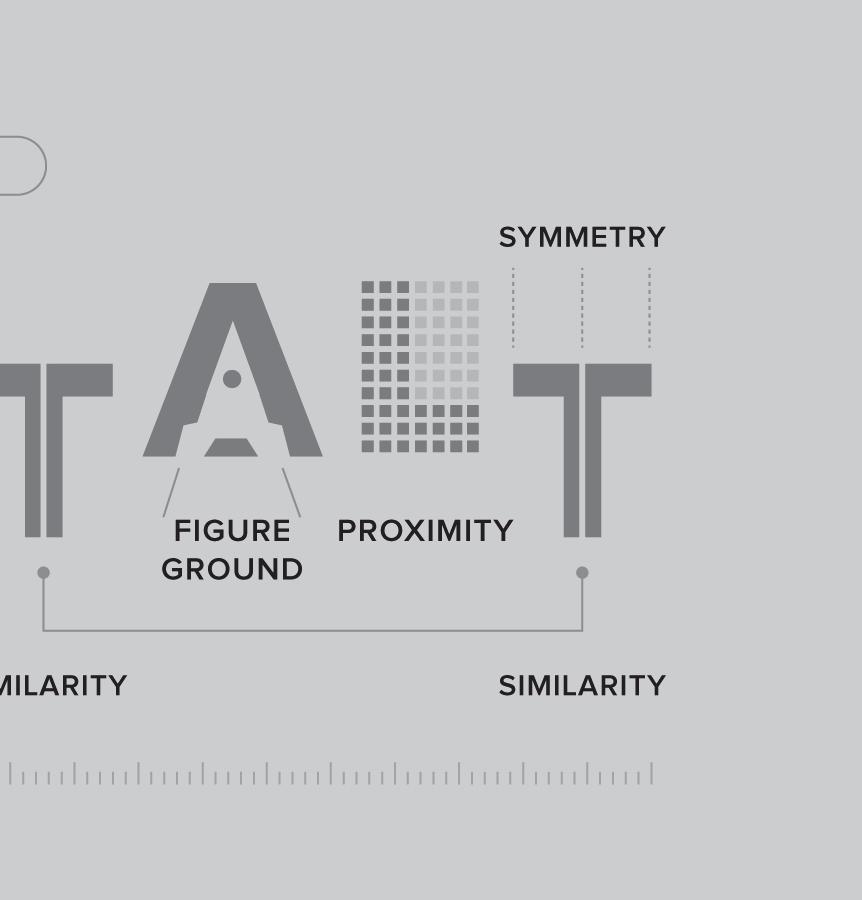
maximalism
Maximalism talks about exaggeration, boldness. The idea of maximalism in the future considers the mixing of multiple identities, multiple crafts, multiple materials.
For such an idea, the intention is to ensure that the co-existence compliments each other, and they support each other without compromising the aesthetic quality of the work.
Design intervention is a process that involves designing new products; redesigning existing products, with changes in shape, size, colour, surface manipulation, function and utility; exploring new markets and reviving lapsed markets; applying traditional skills to meet new opportunities and challenges; and the introduction of new materials, new processes, new tools and technologies.
It is seen as an interface between traditional and modernity, that matches craft production to the needs of modern living. Design interventions have a very important role in every step of the process in the creation of the craft. They should focus on the Identity of a craft, its social and cultural relevance to its region, and the processes and materials involved, to incorporate the interventions in the right situations, with efficient expected outcomes and reasonings. Traditional crafts are memory-based, and only memory is the knowledge bank of their traditional methods and materials.
LESS IS BORE MORE IS MORE MEMPHIS

form identity
Existing waste forms








exploratory concept
Forms I want to combine it with
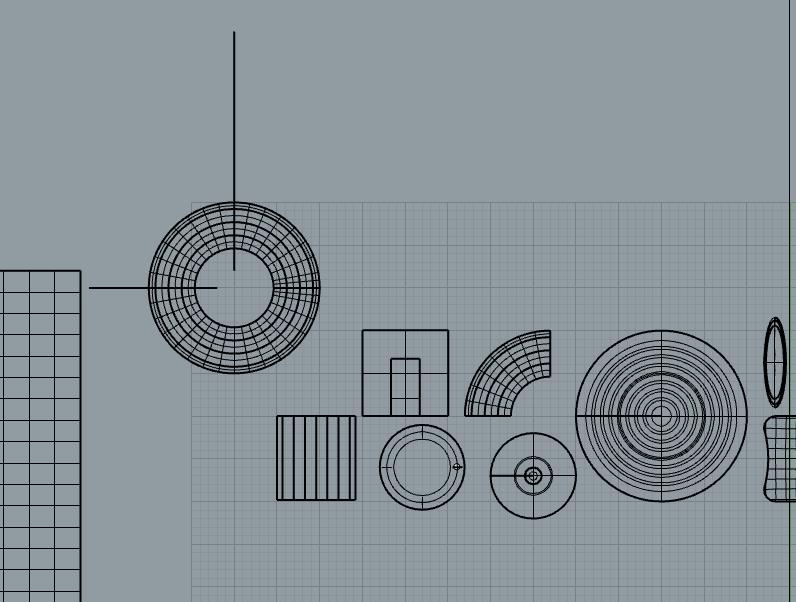

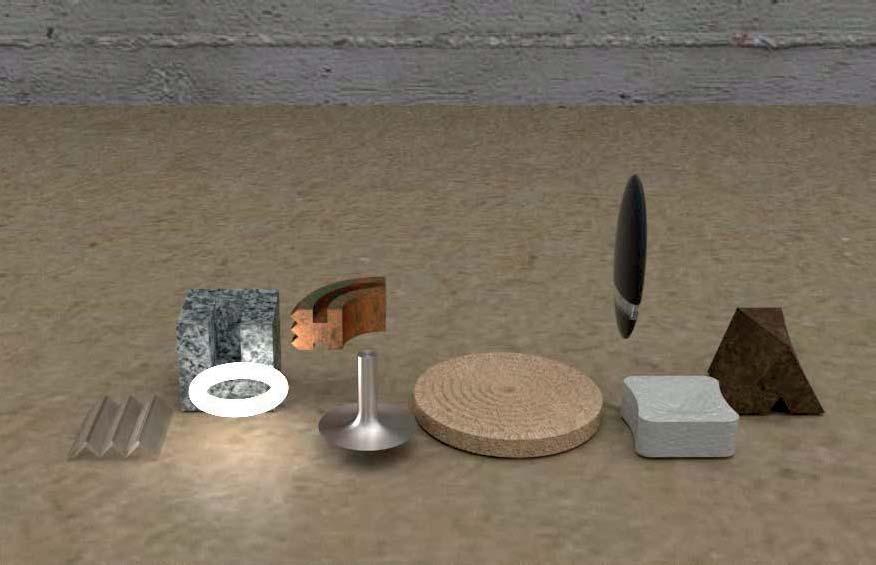

form and dance
The constrain with objects on earth is that, they are attracted to Earth beacause of Gravity (as we know it but still yet not completly understand it), a sphere will roll but not a cube.
Stuff in space repsonds and reacts very differently as it does on the Earth. And hence, so much stuff is designed so differently for space.
The dance of objects on table, the stationary objects on floor, the shelves, the cupboards, all are conceived as a form; made in simplest to complex understanding of function, beauty and tales.

eurythmic dance
“The dance is the mother of the arts. Music and poetry exist in time; painting and architecture in space. But the dance lives at once in time and space.”
~
Curt Sachs
 Nataraja, (Sanskrit: “Lord of the Dance”) the Hindu god Shiva in his form as the cosmic dancer, represented in metal or stone in many Shaivite temples, particularly in South India.
Nataraja, (Sanskrit: “Lord of the Dance”) the Hindu god Shiva in his form as the cosmic dancer, represented in metal or stone in many Shaivite temples, particularly in South India.
T _hesis

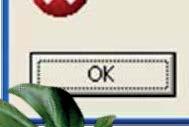

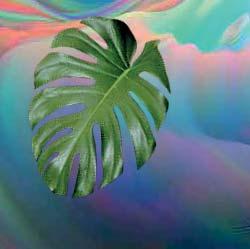
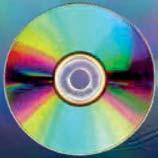
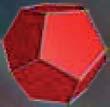


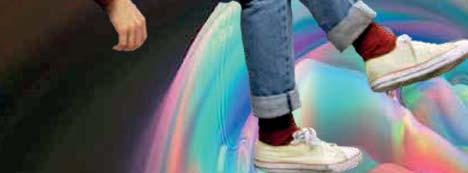

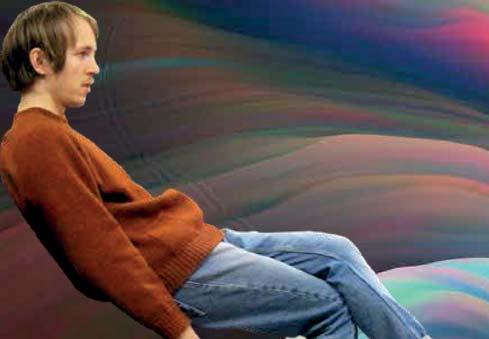


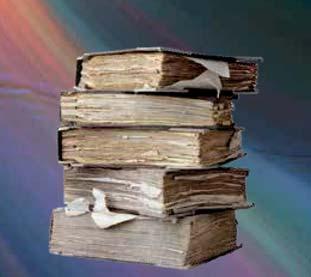

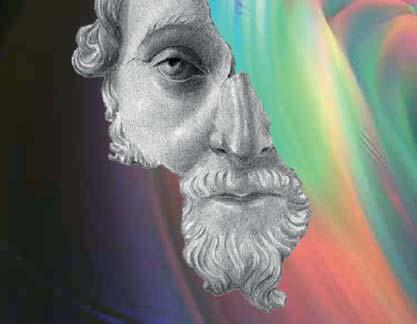

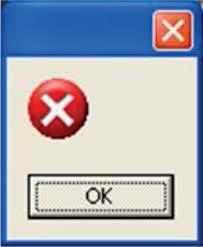



- Setbacks
- Inference
- Iterations
- Strategies
- Detailing
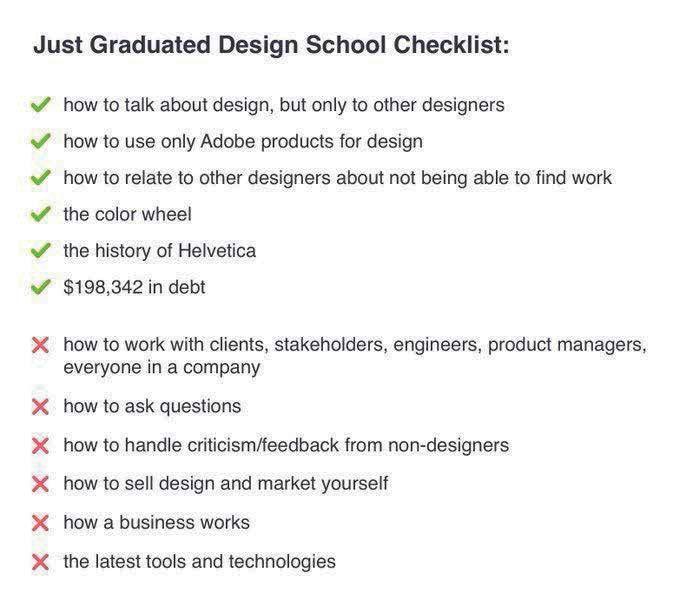
C _onclusis
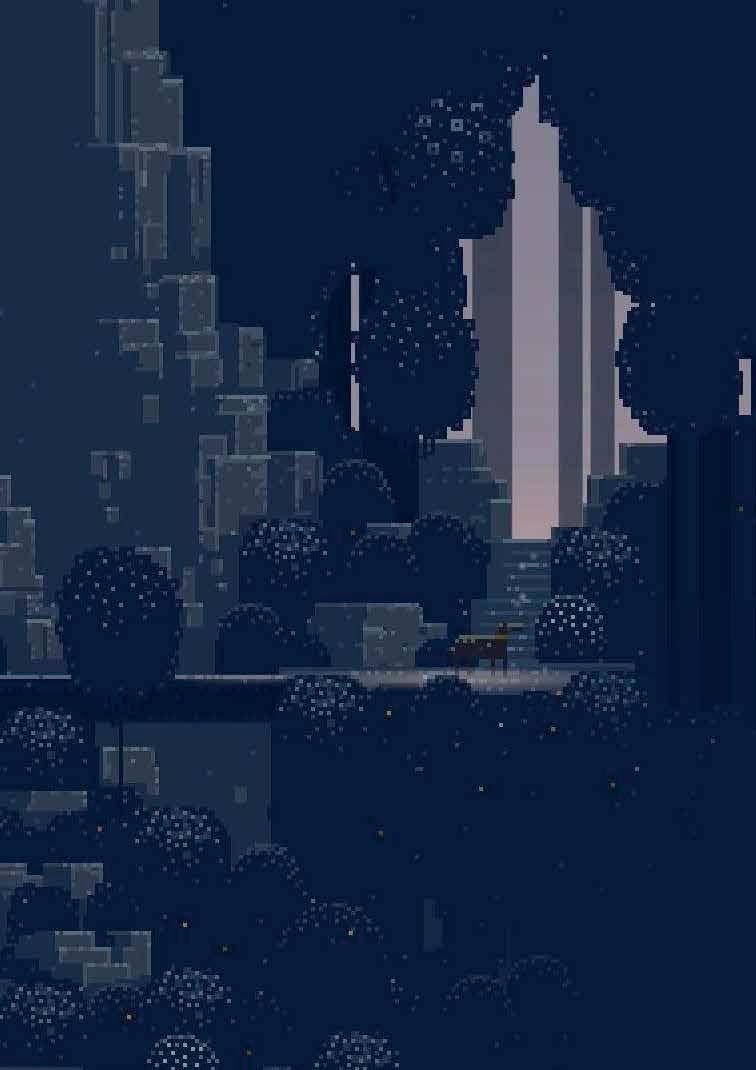 by John Lennon
by John Lennon
Imagine there’s no heaven
It’s easy if you try
No hell below us
Above us, only sky
Imagine all the people
Livin’ for today Ah
Imagine there’s no countries
It isn’t hard to do
Nothing to kill or die for And no religion, too
Imagine all the people
Livin’ life in peace You
You may say I’m a dreamer
But I’m not the only one I hope someday you’ll join us And the world will be as one
Imagine no possessions I wonder if you can No need for greed or hunger
A brotherhood of man
Imagine all the people
Sharing all the world You
You may say I’m a dreamer
But I’m not the only one I hope someday you’ll join us And the world will live as one
imagine
Reflections
In conclusion of all the work I did or try to do for my graduation project, it never came to a solid real-life product. With the onset of climate change and how homo sapiens have fucked up the planet earth, we are still blind and carelessly living our lives.
I have been scared for last few months and also especially because of the recent pandemic that why is should I even create more.
Well, it turns out that we are part of this rat race and we must run until we die. We must endlessly create products for the captialist consumerist society we live in !! There’s no way out of it. And genuienly I don’t call this living. work should not be life but only a part of it.
And when it comes to education, its a pure business model. Most of the people in the institution live in an illusion, a bubble which they don’t want to come out of.
Disappointed by the structure of this institution and the working methodolgy. The insitution is simply stuck in the early days of glories but things on the other side of the world has changed enormously.
In the end, I just want to ask the teachers and professors of the institution one simple question. What have they been preparing us for ?!
Feedbacks
Would love to hear the feedbacks from the anyone and everyone which might help me grow to a better version of myself !!
You can send the feedbacks to - sgraphs@hotmail.com










 Jacob, S. S. Col. (1890)
W. Griggs aand Sons (London)
Jacob, S. S. Col. (1890)
W. Griggs aand Sons (London)
























 Rube Goldberg’s contraption (Kinect Art)
Rube Goldberg’s contraption (Kinect Art)
 SCENTURY by Helder Suffenplan
SCENTURY by Helder Suffenplan














 Acoustic Locator - World War One
Acoustic Locator - World War One

 Michel Blazy
Michel Blazy

























 ideefixe by a4_achaar
ideefixe by a4_achaar


 Octavi Serra
Octavi Serra

 Fake Fliers by Nathaniel Russell
Fake Fliers by Nathaniel Russell














 NASA’s Pioneer 10 and 11 spacecraft, which launched in 1972 and 1973, carried this design, which was etched on a 15x23-cm gold-anodised aluminium plate.
NASA’s Pioneer 10 and 11 spacecraft, which launched in 1972 and 1973, carried this design, which was etched on a 15x23-cm gold-anodised aluminium plate.
















































 Nataraja, (Sanskrit: “Lord of the Dance”) the Hindu god Shiva in his form as the cosmic dancer, represented in metal or stone in many Shaivite temples, particularly in South India.
Nataraja, (Sanskrit: “Lord of the Dance”) the Hindu god Shiva in his form as the cosmic dancer, represented in metal or stone in many Shaivite temples, particularly in South India.




















 by John Lennon
by John Lennon

